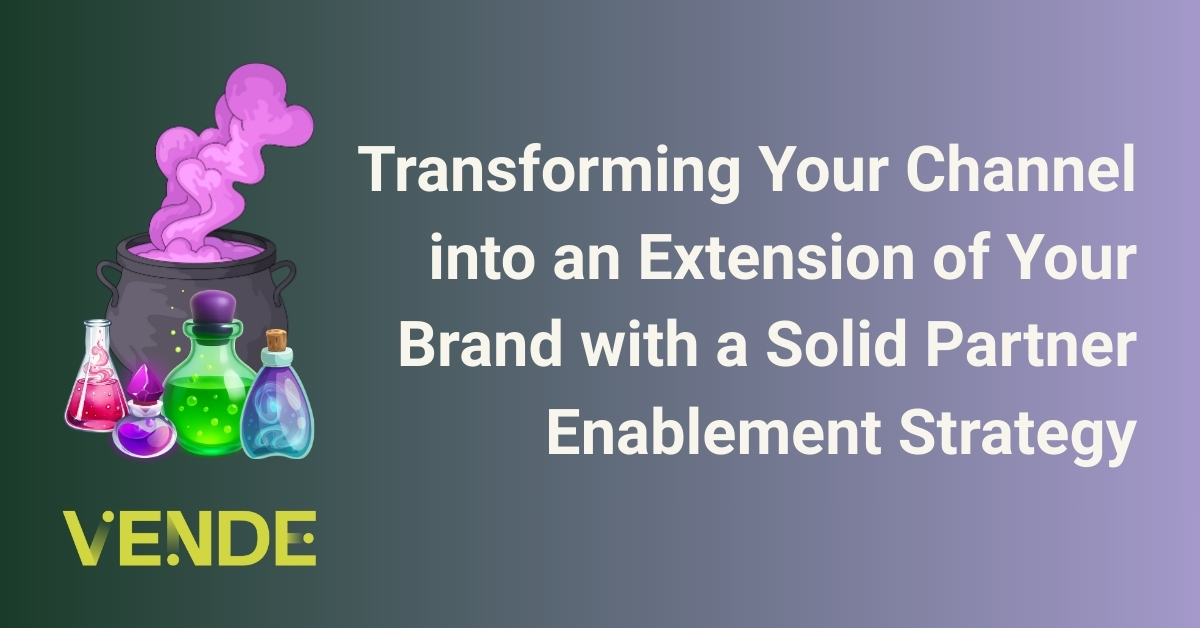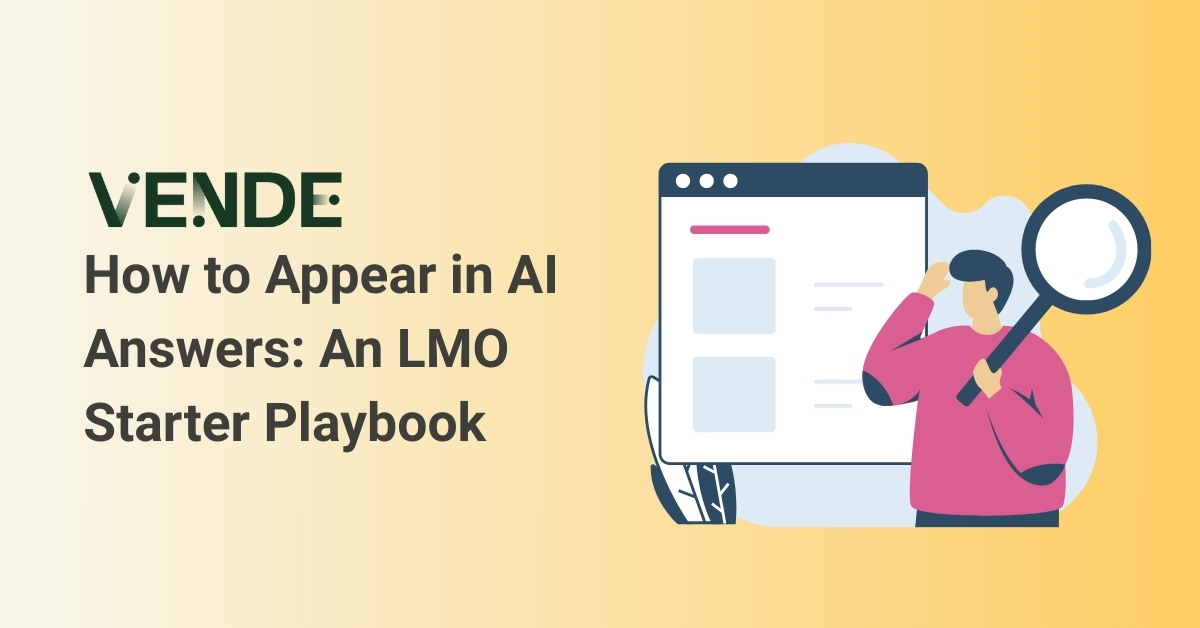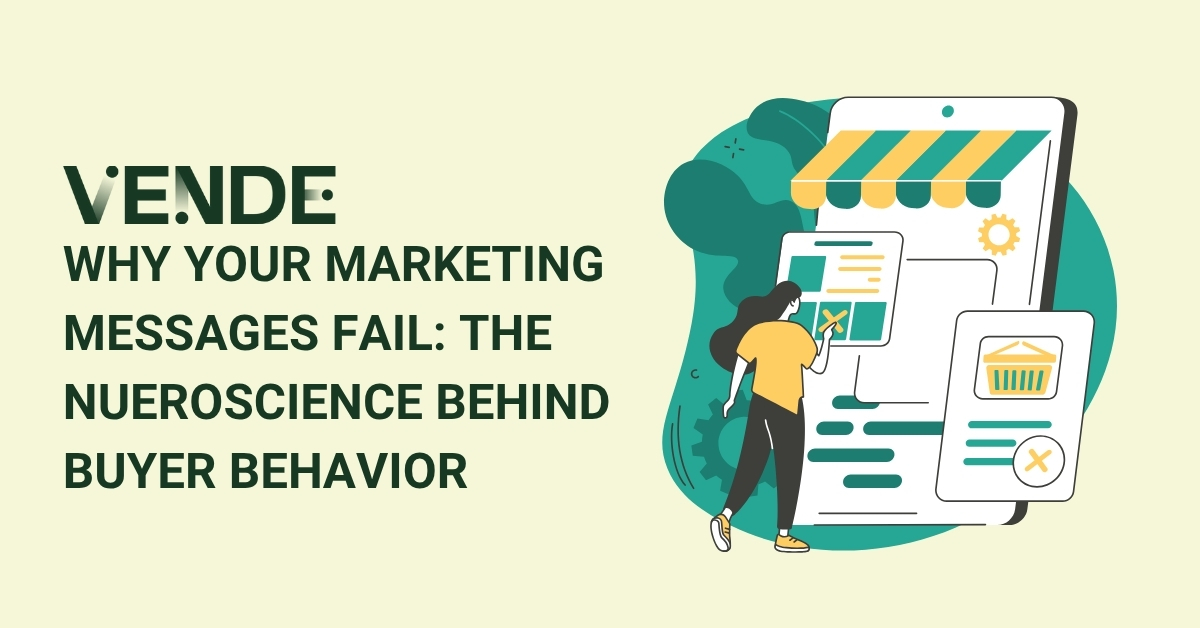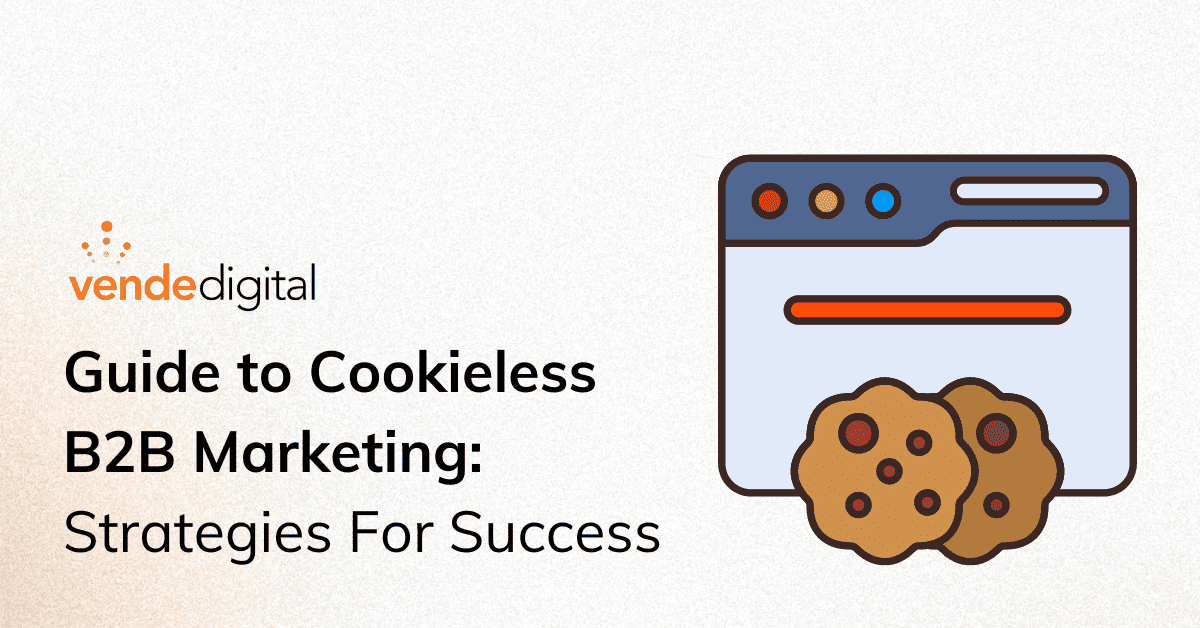
Navigating the Cookieless World: A Comprehensive Guide for B2B Marketers
The digital marketing landscape is undergoing a seismic shift as we move towards a world without third-party cookies. For years, marketers have relied on cookies to track user behavior, target ads, and personalize experiences across the web. However, with the rise of regulations like GDPR and CCPA, major browsers are phasing out support for third-party cookies. As a B2B marketer, it's crucial to understand the implications of this change and adapt your strategies accordingly. In this comprehensive guide, we'll explore the cookieless world, its impact on B2B marketing, and the steps you can take to thrive in this new environment.
The Demise of Third-Party Cookies
Third-party cookies are created by domains other than the one you're visiting and are commonly used to track users across devices and websites. They've been a staple in digital marketing, enabling tactics like intent-based targeting, cross-site tracking, retargeting, and behavioral advertising.
Due to privacy concerns, the tide has turned against third-party cookies. Safari and Firefox have already blocked them by default, and Google Chrome, which holds over 60% of the browser market share, will phase them out by the end of 2024. The driving force behind this shift is the growing demand for user privacy and the implementation of strict data protection laws. As a result, marketers will soon lose access to the wealth of data they've relied on for years.
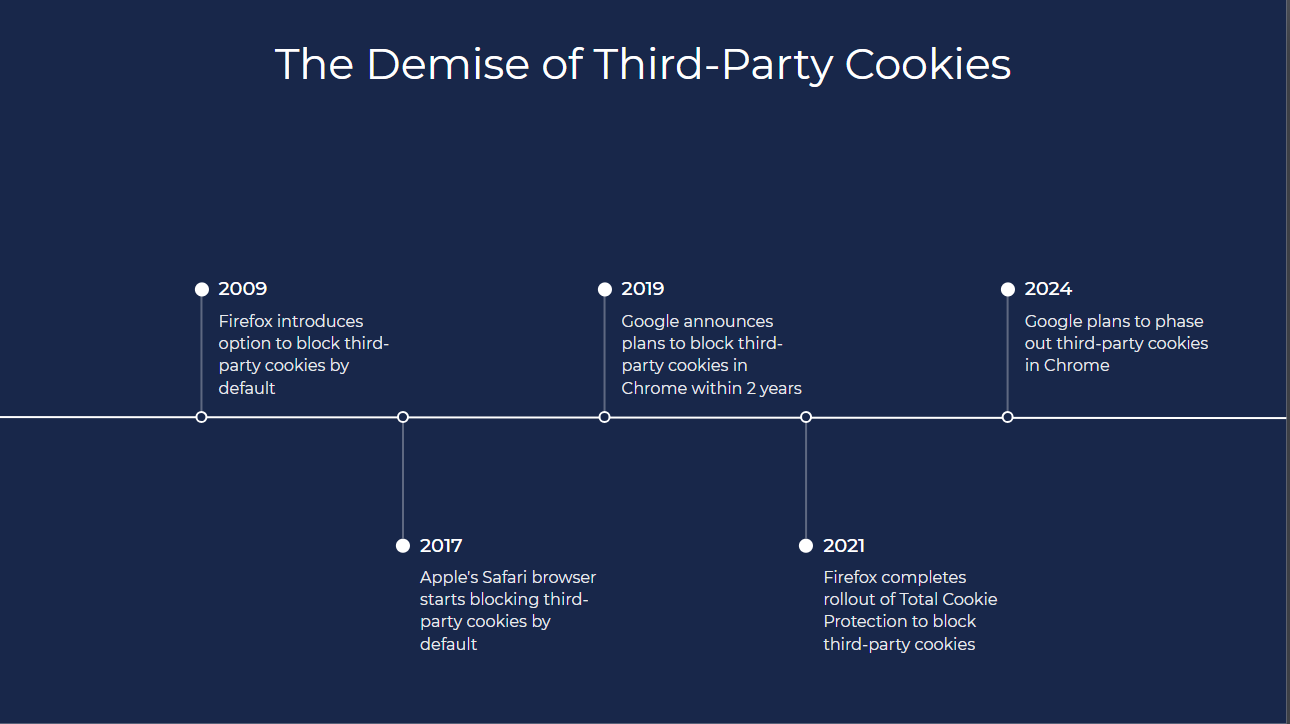
Understanding Third-Party Cookies vs. First-Party Cookies
Cookies have been the silent workhorses powering much of the personalized ad experiences we see today. However, not all cookies work the same way, and not all cookies are going away.
First-Party Cookies are created and stored by the website users visit. They're used to remember things like login details and to personalize the site experience. For instance, when a user returns to a website, first-party cookies ensure that the site remembers their previous actions, preferences, and settings. These are generally privacy-friendly because the site uses them the user has chosen to interact with and are essential for a smooth user experience.
Third-Party Cookies, on the other hand, are created by domains that are not the website the user is visiting. These cookies are primarily used for cross-device and cross-domain tracking for online advertising purposes.
The image below illustrates this process. It starts with a user visiting 'Website A,' where their behavior is tracked. This data is stored by a third-party cookie and then utilized by 'Website B' to recognize the user and display personalized advertisements during their visit to ‘Website B.’
In this new landscape, First-Party Retargeting still works. It uses the data collected from your website to re-engage users who have already shown interest in your products or services, offering a more privacy-conscious approach.
Although less extensive than third-party methods, first-party data is becoming the gold standard in a cookieless world due to its accuracy, reliability, and compliance with privacy standards.
As B2B marketers, understanding these nuances and adapting to the shifting sands will ensure compliance with privacy laws and help build trust with your audience. Embracing first-party data strategies and transparent practices will pave the way for success in a cookieless future.
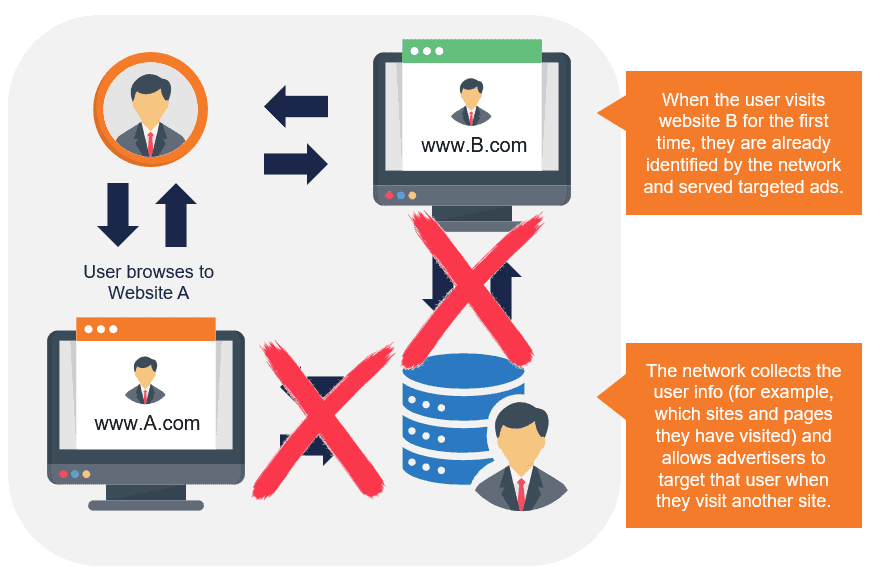
Impact on B2B Marketing Strategies
The deprecation of third-party cookies will have significant implications for B2B marketers. Delivering highly targeted ads and personalized content without access to third-party data will become more challenging. Retargeting and account-based marketing (ABM) tactics that rely on tracking users across sites will be disrupted.
Attribution and measurement will also be affected, as cookies have been a key tool for tracking user journeys and attributing conversions. Strategies must shift up the funnel to engage audiences in early touchpoints instead of relying solely on lower-funnel tracking.
More buyers' actions will occur within the “dark funnel” (anonymous pre-conversion interactions), making it harder to gain a complete picture of the buyer's journey. This shift in buyer behavior has already been challenging for marketers to track and will become even more difficult without cookies.
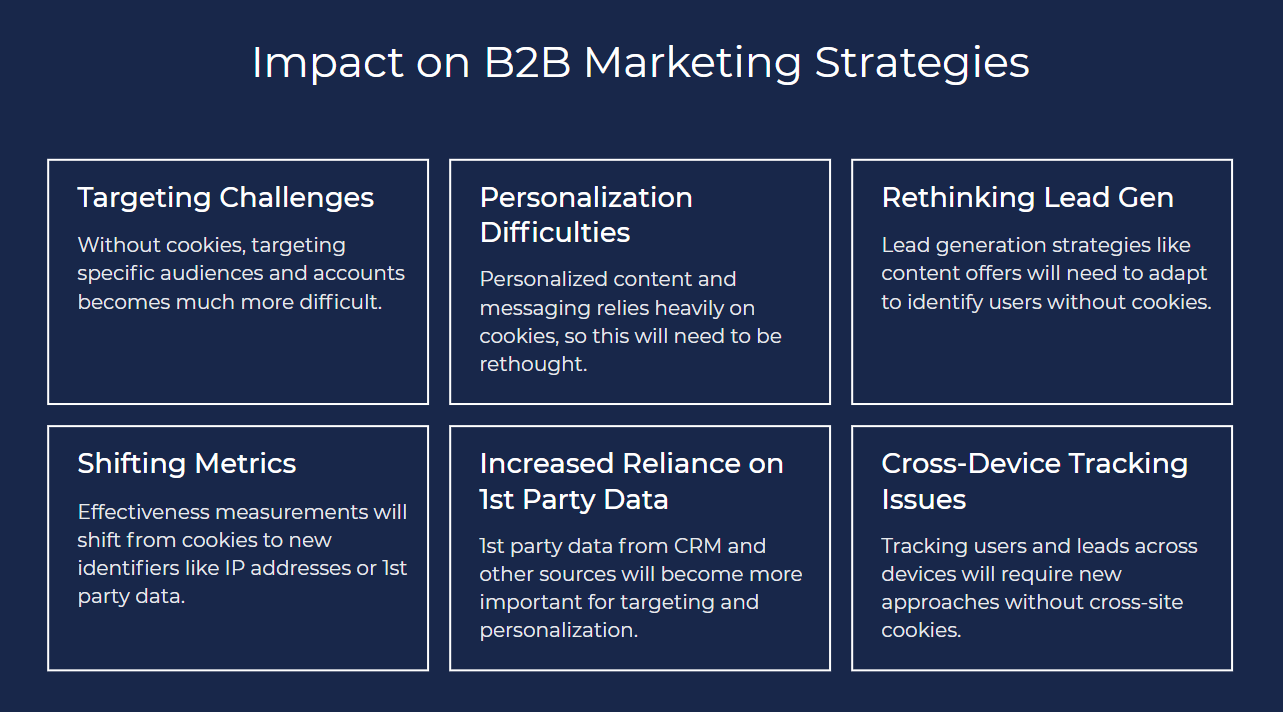
Hang in There: All is Not Lost
The shift to a cookieless world presents challenges AND opportunities for B2B marketers. While it may disrupt traditional targeting and measurement methods, it also allows building trust-based connections with audiences. Transitioning to a first-party data approach, embracing privacy-conscious strategies, and focusing on delivering more value to customers can help you navigate this new cookieless world.
Our advice: Embrace change, stay agile, and empower your team for success in the ever-changing world we call B2B digital marketing. The one thing that never changes in B2B marketing is that it’s constantly changing.
Additionally, keep an eye on cookieless solutions like Google's Privacy Sandbox and Federated Learning of Cohorts (FLoCs), which aim to provide privacy-preserving alternatives to third-party cookies.
Shifting to a First-Party Data Strategy
First-party data will become the foundation of B2B marketing strategies in a cookieless world. As mentioned, first-party data is information collected directly from your audience through your owned channels, such as your website, app, or CRM. This data is more accurate, reliable, and privacy-compliant than third-party data. Many B2B marketers are investing in Customer Data Platforms (CDPs) to maximize the value of first-party data.
What Are Customer Data Platforms (CDPs)?
CDPs unify data from various sources, creating a comprehensive view of each customer. This enables marketers to build detailed audience segments, personalize experiences, and activate data across channels.
10 Tips for Collecting More First-Party Data
To collect first-party data, focus on creating valuable content and interactive experiences that encourage users to engage and share their information voluntarily.
Here are some easy-to-implement tips for collecting more first-party data:
- Email newsletter sign-ups: Encourage visitors to sign up for your email newsletter by offering valuable content, exclusive insights, special offers, or early access to new products or features. Communicate the benefits of subscribing and provide a simple, user-friendly sign-up process.
- Content upgrades: Offer free resources like templates, checklists, or guides that your target audience would find valuable. Require users to provide their contact information to receive the resource.
- Interactive tools and calculators: Develop engaging tools related to your industry or product. For example, create a "Which [Product] Is Right for You?" configurator or a "Calculate Your [Industry] ROI" tool. Ask users to provide their information so they can receive personalized results or recommendations.
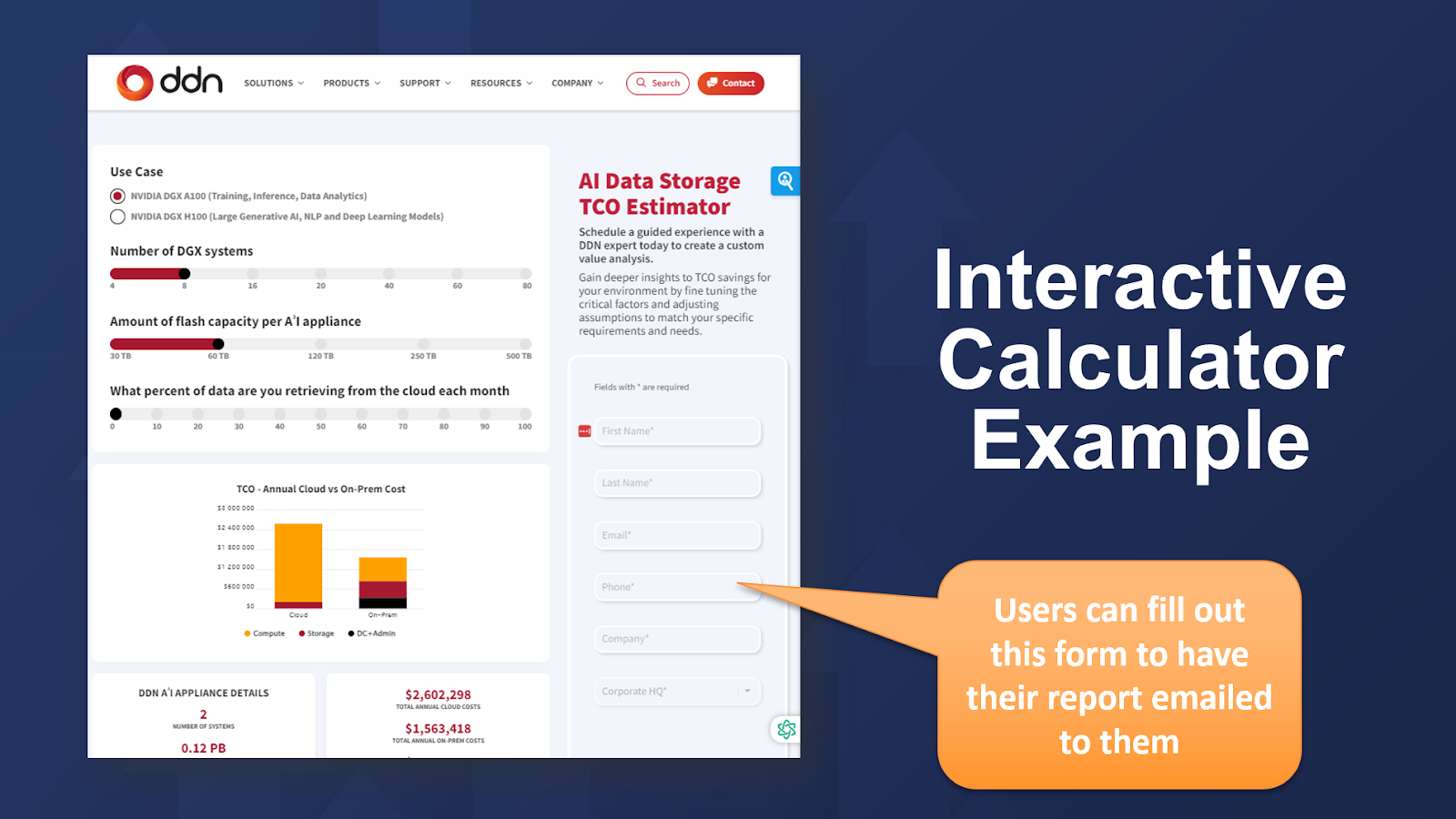
- Customer interviews, surveys, and feedback forms: Reach out to your audience and ask for their feedback through interviews, surveys, or feedback forms. Offer incentives like access to the survey results or gift cards to encourage participation.
- Event registrations: Host webinars, workshops, or virtual events related to your industry or product. Require attendees to register with their contact information to participate. Utilize registration forms on your website vs. third-party registration (i.e., Zoom Registration). You want visitors to land on your website so you can track this as first-party data.
- Build a community for your target audience: Creating a community presents an excellent opportunity to gather first-party data, foster relationships, and provide support within the middle of the funnel. Your community should be a sales-free zone. Instead, emphasize delivering substantial value to members through professional growth opportunities, peer support, and valuable content. Shameless plug: If you haven’t already, check out our Demand Gen Jammers Community on LinkedIn.
- Build your presence on review sites: Boost your online reputation by engaging with reviewers on sites like G2 and Clutch. Address concerns promptly and demonstrate your commitment to customer satisfaction. Higher rankings on these sites will enhance your appeal to potential customers who rely on peer reviews to make informed purchase decisions.
- Chatbots and live chat: Implement chatbots or live chat on your website to assist visitors and answer their questions in real-time. Ask visitors to provide their contact information so they can receive follow-up resources via email. If you are a Hubspot customer, you already have this feature built-in and simply need to set it up.
- Progressive form profiling: Gradually collect additional information about your leads over time by asking for more details with each interaction. For example, start with essential information like name and email, then ask for areas of interest, company size, industry, or role in subsequent forms or conversations.
- First-party retargeting is still alive and well: First-party retargeting occurs when a visitor is on your site, and you retarget them on other platforms they visit. For instance, you can retarget website visitors on LinkedIn.
Remember always to be transparent about how you will use the data collected and provide clear opt-out options to comply with privacy regulations. Focus on delivering value to your audience in exchange for their information. Use the first-party data collected to provide personalized, relevant experiences that build trust and loyalty over time.
Adapting Targeting and Personalization Tactics
Without third-party cookies, you’ll need to explore alternative targeting methods. Follow these recommendations to reach your target audience with a personalized experience.
Contextual Marketing is Making a Comeback!
Smart contextual marketing, which serves ads or gets you exposure based on the audience or content rather than third-party user behavior, will become more prevalent. Good examples for B2B marketers include:
- Industry website or newsletter insertions: Placing ads or sponsored content in online publications that cater to a specific industry is a prime example of contextual targeting. For instance, a company selling cybersecurity solutions might target ads within newsletters or articles about data breaches or cybersecurity trends on technology news websites.
- Webinars and conferences: Participating in, teaming up with, or presenting at webinars and online conferences tailored to your target market can offer valuable contextual relevance.
- Influencer marketing: Collaborating with an industry influencer is an excellent form of contextual marketing, especially when the influencer's content and audience align closely with your product or service. While traditional contextual targeting focuses on placing ads or content in relevant channels based on the topic, influencer marketing adds a layer of personal endorsement and trust to this strategy.
Data Segmentation = Cookieless Personalization
First-party data segmentation will also be crucial for delivering personalized experiences. You can create granular audience segments by leveraging data from owned channels based on demographics, interests, and behaviors. AI and predictive modeling can further enhance targeting by identifying patterns and predicting future actions. Examples include:
- Developing content hubs around key topics/use cases: With the detailed engagement data collected from the content hub, you can segment your audience based on interests, behaviors, and engagement levels. This segmentation allows for more personalized content creation and distribution, targeting specific audience groups with content tailored to their preferences and needs.
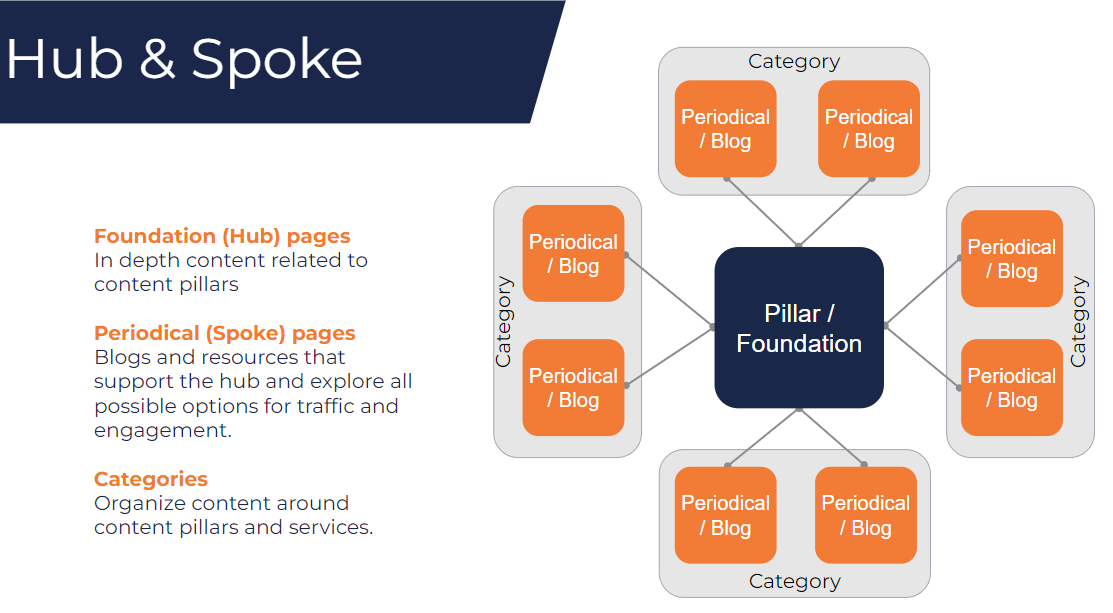
- Website engagement: Utilize website activity segmentation by analyzing pages visited, time spent on site, and downloaded content to gauge interests and levels of engagement effectively.
- Email engagement: Segment based on email interactions, such as open rates, click-through rates, or specific links clicked, to gauge interest and tailor follow-up communications.
- Webinar engagement: Segment your audiences by analyzing various engagement metrics from webinars, leading to more personalized and targeted marketing strategies.
- Lead scoring: Implement a lead scoring system that assigns points to leads based on audience demographics, behavior, and engagement. Segment leads based on their score to prioritize follow-up to deliver targeted messaging.
Optimizing Content and SEO for First-Party Data Capture
Content marketing and SEO will be pivotal in attracting and engaging audiences in a cookieless world. To win in SEO, create valuable, informative content that resonates with your target audience, establishes thought leadership, builds trust, and drives top-of-funnel traffic to your website. Check out our blog on the top B2B SEO ranking factors for 2024 to improve your relevance and rankings in an evolving search landscape.
Content upgrades, events, newsletters, and community can then be used to capture first-party data in exchange for access. Ensure that your offers provide a fair value exchange to justify the information exchange.
See Better. Do More: Measuring Success in a Cookieless World
Transitioning to a cookieless world means rethinking measurement and attribution strategies. Traditional models relying on third-party cookies will lose effectiveness. Privacy-compliant solutions using first-party data and multi-touch attribution models will take precedence. Analyzing first-party data across channels and focusing on privacy-safe metrics like engagement, conversions, and customer value are key in this new landscape. Here are tips for success in a cookieless world:
- Focus on first-party data: Prioritize the collection and analysis of first-party data from your website, app, or CRM to measure user engagement, conversion rates, and customer lifetime value.
- Leverage privacy-compliant analytics tools: Utilize privacy-friendly analytics solutions, such as Google Analytics 4 (GA4), that rely on first-party data and provide aggregated insights without needing third-party cookies.
- Focus on first-touch & last-touch attribution: Analyze both first-touch and last-touch attribution data to gain a more comprehensive view of the user journey. Identify users' most common paths from initial awareness to final conversion, and optimize your marketing efforts accordingly. Use this data to create targeted campaigns or content that more effectively guides users through the funnel.
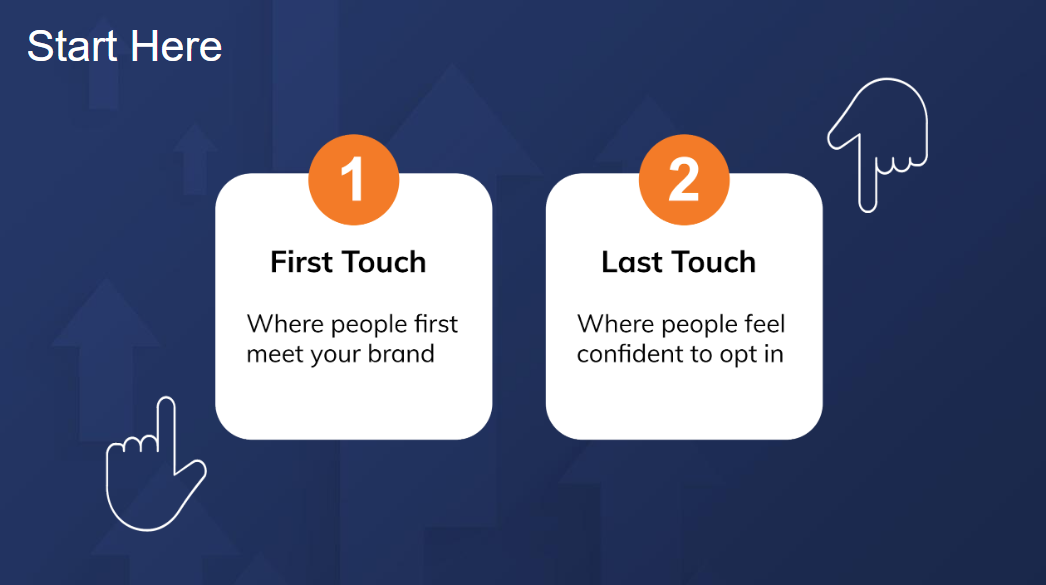
- Use heatmaps and session recordings: Monitor how users interact with your website to gain qualitative insights into user behavior and identify areas for improvement.
- Measure conversions and goals: Set up conversion tracking for key actions, such as form submissions, sign-ups, chats, or calls, to measure the success of your marketing efforts.
- Use UTMs: Use UTM parameters to track the source, medium, and campaign of inbound traffic and attribute conversions to specific marketing efforts.
- Asking "How did you hear about us?" on forms: Add a required field on lead gen forms asking users how they found your company. Use an open text field for users to share. Analyze the input for insights on top-performing brand awareness and lead gen channels.
- Conduct customer research: Interview customers and implement user surveys or feedback forms to gather qualitative data on user preferences, satisfaction, and pain points.
- Measure incremental lift: Run A/B tests or experiments to measure the incremental impact of specific marketing initiatives, such as new ad creative or personalized content.
- Control groups: Compare the performance of treatment and control groups to determine the actual lift in engagement or conversions.
Building a Privacy-First Marketing Culture
To thrive in a cookieless world, B2B marketers must prioritize user privacy and build trust with their audience. This starts with developing transparent data collection and consent management practices.
- Transparency: Communicate what data you collect, how it's used, and provide easy opt-out options.
- Compliance: Ensure your practices align with privacy regulations like GDPR and CCPA.
- Education: Foster a culture of privacy within your organization by educating your team on the importance of data protection and the impact of privacy laws on marketing.
Encourage a mindset of delivering value to your audience and building long-term relationships based on trust and transparency.
Key Takeaways and Next Steps
To prepare for the cookieless future, B2B marketers should take the following steps:
- Conduct a first-party data audit: Assess your current first-party data collection practices and identify gaps or opportunities for improvement.
- Evaluate and implement a CDP: Invest in a Customer Data Platform to unify and activate your first-party data across channels.
- Review your technology stack and fill gaps. Ensure you have analytics, personalization, and attribution tools ready for a cookieless world.
- Update targeting and personalization strategies: Shift your focus to contextual targeting and first-party data segmentation while exploring alternatives to cookieless solutions like Google's Privacy Sandbox.
- Test cookieless targeting alternatives: Try influencer collaborations, building an industry community, or guesting on podcasts. Run A/B experiments to benchmark performance.
- Optimize content and SEO: Create valuable, engaging content that attracts and converts your target audience. Implement SEO best practices to improve organic visibility.
- Adapt measurement and attribution: Adopt privacy-compliant measurement solutions and multi-touch attribution models that leverage first-party data insights.
- Foster a privacy-first culture: Prioritize user privacy, develop transparent data collection practices, and educate your team on the importance of data protection.
- Stay informed: Monitor industry developments, regulatory changes, and emerging technologies to stay current.
Embrace Change, Stay Agile, and Put the Customer First
The loss of third-party cookies requires a shift to first-party data collection, consent-based tracking, and understanding the many "unseen" interactions that influence buyers. Focusing on the customer while strengthening your data and infrastructure is crucial to adapt and reduce dependency on external sources. By testing, enhancing team skills, and advocating responsible data practices, you can effectively adapt to the evolving landscape of digital marketing.
